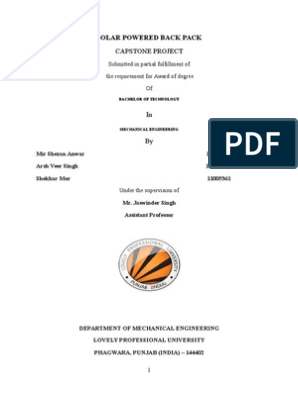Pendulum Lab
Introduction
In this activity you will investigate how variables affect the motion of a
pendulum. You will discover how the period of a simple pendulum depends on
the length of the string and the mass of the pendulum bob. It's easy to measure
the period using the photogate timer.
A simple pendulum has a mass m (bob) hanging from a string of length l fixed
at a pivot point. When displaced to a small initial angle and released, the mass
will swing back and forth in periodic motion. The period is the time it takes to
complete one whole swing.
Background Information
One day in the late 1500s, a man named Galileo Galilei was sitting in church
when he noticed the lamps hanging from the ceiling were swinging back and
forth. Some of the lamps were making great big swings, and others were only
making little swings back and forth, but they all went back and forth pretty
regularly. Galileo was a curious man, and so he decided to use his heartbeat to
measure how long it took the pendulums to swing back and forth. He was very
surprised by what he learned. Today, you will repeat Galileo's experiment to
learn about pendulums.
Procedure
How to open the simulation:
• Go to the simulation page:
http://phet.colorado.edu/en/simulation/pendulum-lab
• Click to start.
• It will take time to load and then this screen appears:
�Aim: What variables might affect the time it takes for a pendulum to
make a full swing?
Predictions:
• Does the mass of the bob affect the number of swings? Explain.
__________________________________________________________________
• Does the length of the pendulum affect the number of swings?
Explain.
__________________________________________________________________
Explore:
Free Exploration:
For the next 5 minutes become familiar with the simulation. Change
various features such as mass, length etc.
Next: Click and conduct the following investigation.
PART 1
�MASS AND NUMBER OF SWINGS
Hypothesis:
As the mass of the pendulum _________________ the number of swings
will__________________.
For this activity keep the length of both pendulums the same but
different mass. Click . Start both pendulums at 90
degrees. Check the other tools button and use the timer to keep
track of the time. Click play on the timer and then again
so that the pendulums are released. Count the number of full
swings for 30 seconds.
Record the data on the table below.
Number of full swings in
Mass (kg) Length (m) 30 Second
Pendulum 1
Pendulum 2
Did mass effect the number of full swings? Write a conclusion based on
the data you collected.
Why do you think mass does not effect the time it takes for the
pendulum to make a full swing?
_______________________________________________________________________
�PART 2
Length and Number of Swings: How does the length affect the number
of swings?
Write a hypothesis:
As the length of the pendulum _______________________ the number of
swings_____________________.
For this activity the mass should stay the same but the length will
change each time.
Click and conduct the following investigation.
Use the photogate timer and record the period it takes for each
length. Remember the period of a pendulum is the time it takes the
pendulum to make one full back-and-forth swing. Click reset
again.
Next, use the timer (by clicking other tools) and observe the
number of swings the pendulum makes each time you change the
length.
Each time you adjust the length, count the number of full swings
in a 30 second interval.
Make sure that the pendulum is released at the same position each
time.
Record the data on the table below.
Length of the Period (s) Number of swings
Pendulum (m) In 30 seconds
0.5
1.5
2.5
�APPLY
Was your prediction correct?
How can you get the shortest period?
How can you get the longest period?
Write a conclusion on how the length of the pendulum affects the
number of full swings?
________________________________________________________________________



































































































